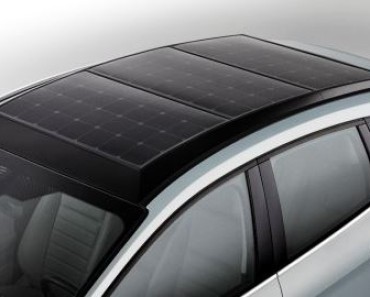By observing the electricity prices around the world, it is found that Denmark, Germany and Spain come out to be the most expensive. Incidentally, their share of renewable energy in the energy mix is also among the highest (35.3 % for Denmark 15.2 % for Germany and 19.4% for Spain, courtesy WEC). Figure 1 depicts the electricity prices per Kwh for various countries (small island nations have been omitted from this survey to avoid anomalies). Could this mean that there is an intrinsic link between the price of electricity and the high share of renewables in the energy mix? Can the UK afford to push further towards renewable energy with the rising levels of fuel poverty? These are profound questions that have to be thoroughly investigated.
Sources: IEA, EIA, National Electricity Boards, OANDA
True cost of Renewable Energy
Denmark has the highest fraction of wind energy in its energy mix. Germany has the highest capacity of wind energy in Europe (over 29 GW) and solar capacity of 29.7 GW. Similarly Spain had exponential investment in solar energy in 2008 adding 2.6 GW to its solar capacity alone, which currently stands around 5 GW. More recently, the growth of wind and solar energy sectors has relatively slowed down as the market saturates.
Although at present the prices are high but it is estimated that the prices will fall for reasons discussed later in this article. A recent report by Bloomberg confirms falling prices of electricity in Germany, a trend that will not be enjoyed by countries that rely heavily on fossil fuels for electricity.
Having greater shares of renewable in the energy mix ensures that these countries are less exposed to ever increasing prices of oil & gas, which are finite resources. And with the depletion of fossil fuels on the horizon, the security is supply will always be under threat. If the policing costs of the waterways are added to the fossil fuel price, this commodity appears to be non-lucrative.
The primary reason for the high cost is that the projects that are presently online were conceived at a time when price of both wind and solar installations was comparatively higher. The growth of this industry has allowed cost reduction of these technologies through economy of scales. Furthermore at present the cost of financing renewable projects is much lower. Banks specifically setup to invest in renewable and sustainable projects in UK are now operational (e.g. Triodos bank and Green Investment Bank). Sections within many mainstream banks have been specifically setup and ethical investment funds have been created to cater to financial needs for this sector. In other words, the investments made in Germany, Spain and Denmark 6 years ago have discounted the costs today and made it much more advantageous to invest in to renewable energy.
The UK currently has just over 6.4% of its energy coming from renewable, a figure that is steadily increasing, although it is still almost a decade away from figures comparable to that of Denmark. Installation of renewable has been beneficial because it increases the production capacity, thereby increasing the supply which eventually results in falling price. UK at present sits in the middle of the electricity price table. With strong wind resources at hand, it has the potential of reducing its electricity prices particularly when present day wind turbines are producing electricity at a cost that is comparable to its generation from gas (In February 2013, Bloomberg New Energy Finance reported that the cost of generating electricity from new wind farms is cheaper than new coal or new base-load gas plants).
It is also worth noting that the average capacity factor (an index to measure operational efficiency of a wind farm or any other renewable energy device) is higher in the UK than Germany, Denmark and Spain due to stronger wind resources. It is even higher than USA and China- countries which boast the highest wind power capacity, thereby adding weight to investments in this sector.
It is also anticipated that the energy prices will fall further as large scale energy storage solutions become more cost effective. At present, excess electricity is wasted and wind farms electricity is first to be “cast-off” from an overflowing grid. However coupled with a storage system, renewable energy can not only prevent this waste but also make inroads in supplying portion of the base load. In many countries, opportunities for pumped storage are being identified and worked upon, while other solutions such as flywheel energy storage are also progressing leaps and bound.
Availability of renewable energy has given Germany the muscle to exercise “Energiewende” policy, that enables them to render their nuclear energy options extinct. On 29 May 2011, Merkel’s government announced that it would close all of its nuclear power plants by 2022. While in the UK, the government is still divided in the ways to solving a looming “Energy Gap”.
As the technology grows, efficiency of both solar and wind power devices is also improving. The more effective top-of-the-line solar panels in 2006 were around 11%-13% efficient, whereas now they range between 18-20%. For wind, better sensors and algorithms are responsible for enhancing the output. A case in point is the GE’s new 2.5-120 wind turbine. It delivers 15% more output compared to its predecessor.
Therefore on a cursory look, it may appear that renewable energy is driving the energy prices up, however approaching facts holistically, points in the other direction. Renewable energy is here to stay and its viability increases every passing day.







